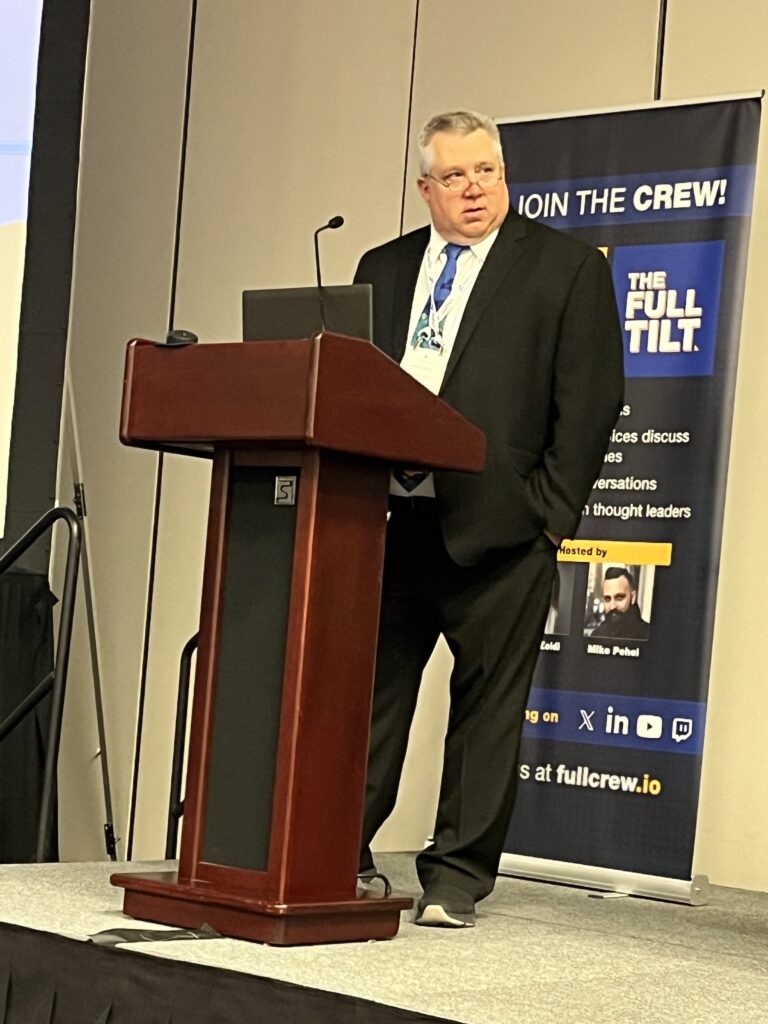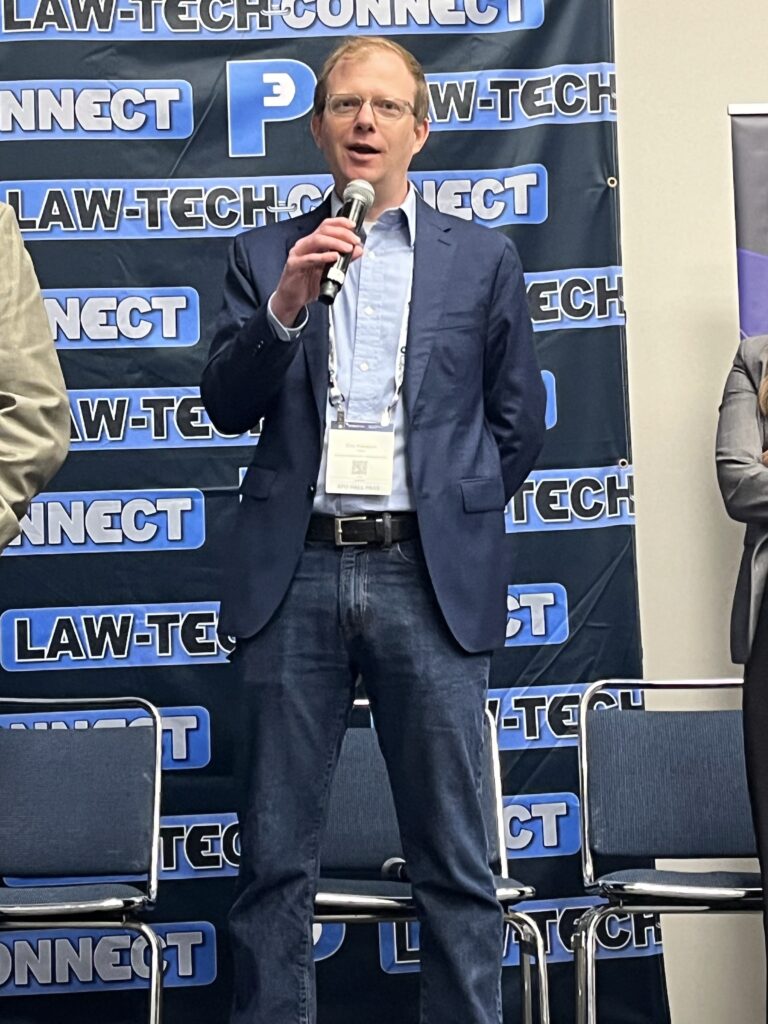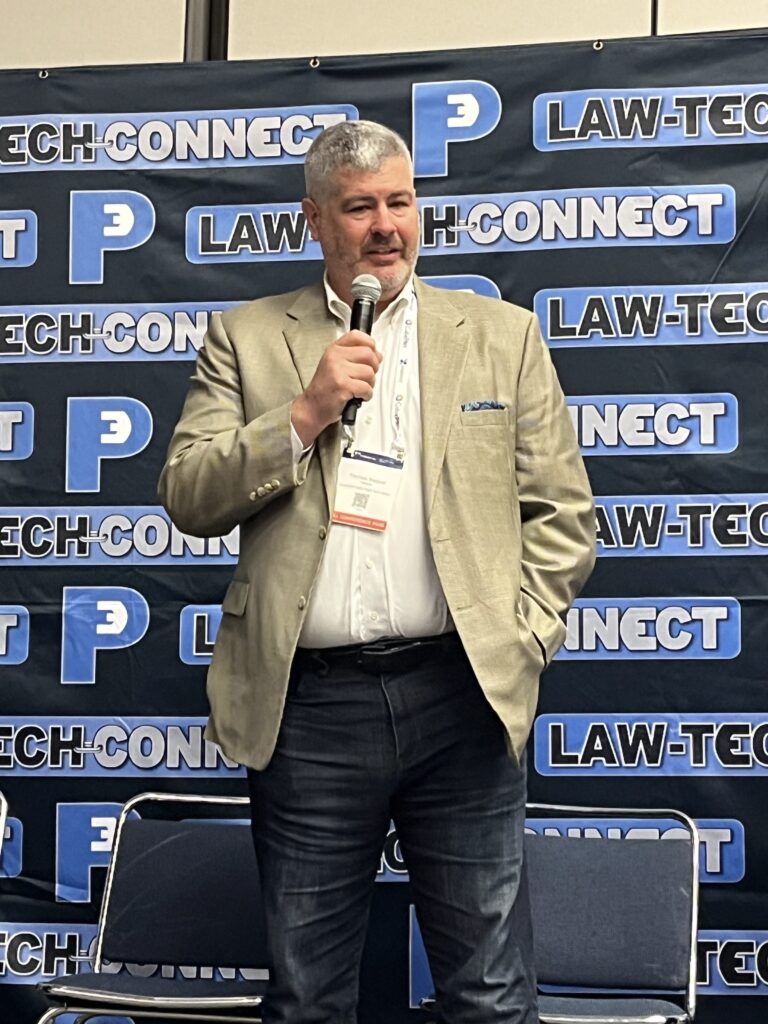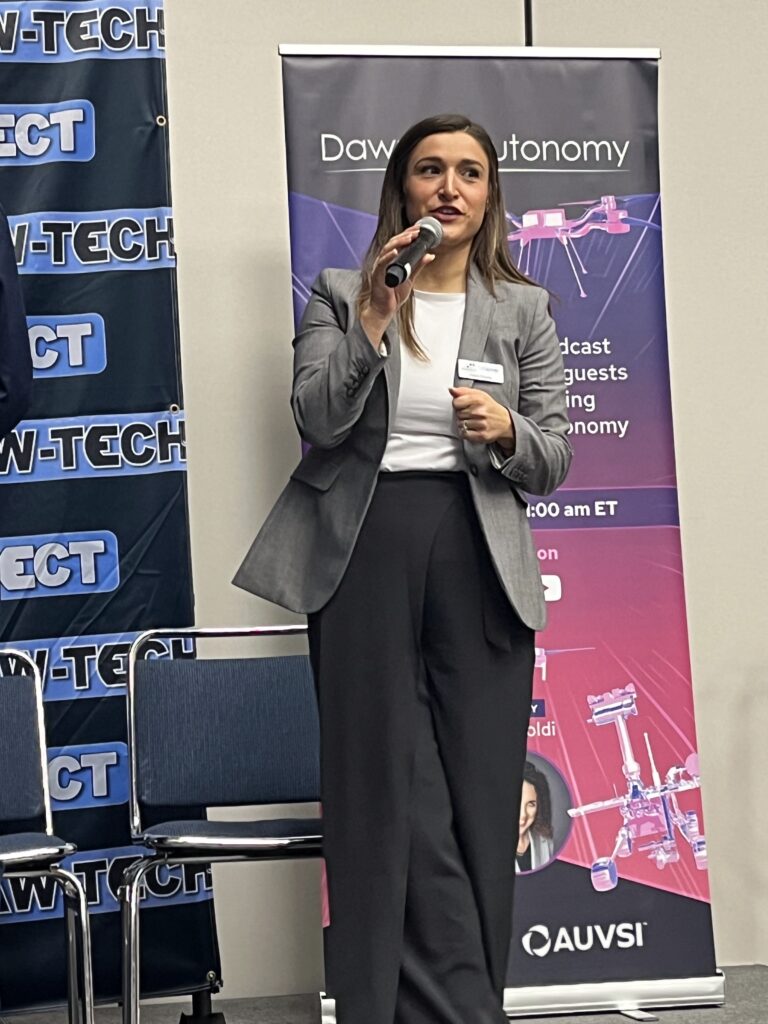As technological innovation and national security become increasingly intertwined, landing a government autonomy contract has become both a high-stakes opportunity and a formidable challenge. The landscape continues to shift at a rapid pace, with new regulations, initiatives, and procurement policies emerging almost daily. At this year’s Law-Tech Connect, a distinguished group of experts from across the legal, technology, and policy spectrum, led by moderator Michael Bauer of ESi, demystified the rules and processes and shared their hard-earned insights to help you win—and keep—these coveted deals.

Understanding the Legal and Regulatory Terrain
The foundation of government contracting has long been the Federal Acquisition Regulation (FAR), but as Eric Ransom, partner at DC-based Crowell and Morning and former Government Accountability Office (GAO) official explained, there are some other non-FAR based contracts and agreements people need to understand. Cooperative Research and Development Agreements (CRADAs), Vendor Demonstration Agreements, and Small Business Innovation Research (SBIR) and Small Business Technology Transfer (STTR) programs are just some of the essential instruments for companies looking to bring advanced technologies to the federal stage.

Lauren Regic from Carahsoft outlined three primary federal acquisition vehicles: the General Services Administration (GSA) schedule, NASA’s Solutions for Enterprise-Wide Procurement (SEWP), and the Army’s Information Technology Enterprise Solutions (ITES) contract. “All three of these federal contract vehicles are available for defense, intel communities, civilian, even tribal organizations as well,” she explained.

Tom Swoyer, president of GrandSKY in North Dakota, emphasized the importance of these various contract vehicles and how, as a practical matter, to tap into them. “The contract vehicle exists and the vehicle becomes the funnel through which the federal government can flow funds,” he noted. “If you have an interesting technology and you’re not sure how to approach the government, this (Carahsoft) is a company that can help you do that and put you right in front of those customers,” he said.

Trending: Non-Traditional Contracting and More Commercial Tech
The speed of regulatory and policy changes in 2025 is unprecedented. As Ransom put it, “It is changing daily.” For example, Congress opened the door to leveraging some non-standard contracting vehicles as well in its National Defense Authorization Act (NDAA) of 2025, signed at the end of 2024. The NDAA indicated an urgency to deploy new technologies rapidly, but also added a few new layers of complexity.
“We got some new middle tier acquisition authority that’s giving priority and accelerating contracts for capabilities that can be fielded within five years,” Ransom noted, specifically aiming to get new technologies—including software—deployed to the field more quickly.
This statutory authority allows the DoD to bypass some of the traditional, slower FAR processes in favor of more agile approaches. The NDAA supports the use of non-traditional contracting vehicles such as Other Transaction Authority (OTA) and Commercial Solutions Openings (CSOs), which are particularly well-suited for software and emerging technology acquisitions. These approaches enable the government to start procurements with streamlined requirements—like pitch decks and in-person presentations—instead of lengthy, complex proposals, making it easier for new and nontraditional companies to compete. There are also pilot programs (such as those in Sections 230 and 231) that support the identification, development, and commercialization of prototypes, including software, through expedited processes.
Additionally, the FY24 NDAA encourages the DoD to recognize and accept the commerciality of technologies developed without government funding, allowing for simplified and accelerated procurement of commercial software products. Regic highlighted the NDAA’s funding focus. “Congress has really enhanced budgets for…(the) Defense Innovation Unit and autonomy engineering…,” she said. “There’s also a strong focus on the integration of autonomy technologies… and a significant step forward in modernizing our defense capabilities.” (For a deeper legislative breakdown, watch Carahsoft’s Lacey Wean on the Dawn of Autonomy).
Tightening The Grip on China: Supply Chains and Cyber Security
The NDAA also introduced new rules around working with China, supply chain security, and evolving cybersecurity standards. For example, regarding China, the NDAA expands restrictions on Department of Defense (DoD) contractors’ relationships with Chinese entities. With regard to China, starting in June 2026, defense contractors will face prohibitions on procuring goods, services, and technology produced or developed by companies on the Chinese Military Companies (CMC) List, and will risk losing future DoD contracts if they engage consultants who lobby for certain Chinese firms. The law also broadens disclosure requirements: contractors must now report not only employees working in China but also those subject to Chinese law or control, and must disclose if they are required to report cybersecurity vulnerabilities to the Chinese government.
On supply chain security, the NDAA mandates the DoD to map, analyze, and monitor supply chains for critical defense technologies, with a specific focus on reducing reliance on foreign—especially Chinese—components. For example, Section 162 of the FY25 NDAA requires the DoD to identify and mitigate risks in the supply chain for small unmanned aerial systems (sUAS), periodically disassemble drones from adversarial countries like China, and develop a strategy for a secure, domestic supply chain.
Cybersecurity standards are also evolving under the NDAA. New provisions require DoD contractors to implement stronger cybersecurity practices, including supply chain illumination (actively assessing and monitoring for vulnerabilities and noncompliance), and to comply with updated requirements for protecting sensitive data, including biometric and mobile device security.
Collectively, these measures underscore a significant increase in regulatory scrutiny on foreign influence, particularly from China, and place new compliance burdens on contractors to ensure the security and integrity of technology supply chains supporting U.S. defense.
The Colors of Secure DoD Tech: Blue and Green Validations Bridge Federal Deals
According to Casey Ocana, Vice President of Public Affairs for the Association for Uncrewed Vehicle Systems International (AUVSI) , the bar for security compliance continues to rise, across the board. She explained how the Defense Innovation Unit’s Blue UAS Program and AUVSI’s Green UAS Program are setting new standards for cybersecurity and supply chain verification.

“The Blue UAS program… did create a bottleneck where it became the default program for everything. So that was when AUVSI launched the Green UAS program… to solve for that problem of scalability and access,” she said.
The Green UAS program is a cybersecurity and supply chain certification initiative designed to address the needs of the broader commercial and non-defense government drone market. Green UAS certification mirrors the rigorous security standards of Blue UAS, including NDAA supply chain compliance, but expands its focus to areas critical for commercial and public sector users. This includes assessments of corporate cyber hygiene, product and device security, remote operations and connectivity, and supply chain risk management.
According to Ocana, Green UAS certification is not a pass/fail process; it is designed to help companies achieve compliance through remediation opportunities. This approach has already helped several manufacturers identify and fix previously unknown supply chain or cybersecurity gaps, enabling them to meet procurement requirements for sensitive missions.
There is also a pathway for Green UAS-certified products to transition to the Blue UAS list if a DoD customer wishes to sponsor and fund the necessary Authority to Operate (ATO) process. In April 2024, AUVSI and DIU signed a Memorandum of Understanding to streamline data sharing for this purpose, further integrating the two certification ecosystem.
Green UAS is one of several pathways onto DIU’s Blue List. DIU announced that its Blue UAS program will now open to other third-party compliance assessors. This significant shift will allow private companies to certify NDAA compliance with the aim of increasing accessibility and speed to market. (See prior AG coverage of DIU’s Recognized Assessors initiative).
Ocana recommended using specialized supply chain transparency services: “There are so many supply chain transparency services now that go beyond just what your bill of materials says… using a partner that does it all day, every day, that’s their sole focus, is the only way in this super complex landscape to be able to stay on top of it,” she advised.
Navigating Federal, State, and Local Opportunities
The procurement landscape is vast, with opportunities at every level of government. At the state and local levels, cooperative purchasing agreements and GSA contracts provide additional avenues for companies to enter the market. “The main ones to know are cooperative purchasing agreements, and those are all predetermined terms and conditions. It really helps to speed up the sales cycle,” said Regic, pointing to programs like OMNIA Partners that are available to all states.
Cooperative purchasing is a widely used procurement strategy that allows state, local, and even tribal governments—as well as certain educational institutions—to access pre-negotiated contracts for goods and services. These agreements are designed to streamline the purchasing process by leveraging the collective buying power of multiple entities, resulting in better pricing, faster procurement cycles, and simplified compliance. Cooperative purchasing can save agencies significant administrative costs and time, as they can bypass lengthy and complex RFP processes and instead buy directly from a pool of pre-vetted suppliers. This is particularly valuable for smaller agencies or municipalities that may lack the resources to conduct their own full-scale procurement competitions. By joining these agreements, they gain access to the same quality suppliers and favorable terms that larger entities enjoy.
GSA’s Cooperative Purchasing Program is another major avenue for state and local governments. Through this program, eligible entities can purchase IT, law enforcement, and security products and services from the federal government’s Multiple Award Schedules (MAS), benefiting from federal pricing and pre-vetted vendors.
Additionally, many states operate their own price agreements or state-level schedules, modeled after the federal GSA system. These agreements further enhance procurement efficiency by allowing local governments, school districts, and special districts to buy off state-awarded contracts at volume discount prices, often without having to go through their own bidding process.
The Realities of Proposal Submission and Program Participation
Securing a contract is not just about understanding the rules—it’s about mastering the process. Dan O’Shay, Commercial and Public Sector Sales lead at MatrixSpace, described the importance of proactive engagement: “We’ve tried very, very hard to partner as closely as we can with the different ‘Werx”…HSWerx (Homeland Security) and AFWERX for the Air Force. … proactive engagement with different stakeholders…to make sure that we’re…in touch and in tune with what they’re really trying to accomplish with their different programs.” He stressed that early and ongoing communication with stakeholders, combined with diligent preparation, can make the difference when deadlines are tight and competition is fierce. (See prior AG coverage of SOFWERX).

Swoyer shared the story of Project ULTRA (UAS Logistics, Traffic, Readiness and Autonomy), a five-year indefinite delivery, indefinite quantity (IDIQ) contract managed through Grand Forks County, which enables Grand Sky to undertake critical logistics and autonomy projects for the Department of Defense (DoD). The key to GrandSKY’s success in obtaining this deal, Swoyer explained, was understanding the nuances of government funding and being able to adapt quickly to changing requirements. “If the terms of the proposal…figure out how to build a machine inside your organization to be able to send those proposals in,” he advised. He also warned against overcomplicating responses: “The proposal is not the opportunity to tell them why they’re approaching it wrong… they asked for X, Y, and Z, give them X, Y, and Z.”
O’Shay echoed the importance of relationships and responsiveness. “(Because) I had a chance to talk with (an agency) about our technology… By the time the RFP came out, it meant that we were very, very competitive. I didn’t have to pontificate,” he said.
Top Tips for Winning Government Autonomy Contracts
The panel concluded with a sense of cautious optimism. The opportunities for companies in the autonomy space are expanding, but so too are the expectations for compliance, transparency, and adaptability. As Ransom observed, “There is a real moment of creativity happening here. You can have a FAR-based IDIQ, you can have a SEWP contract, you can look for the RFIs that are on the street. You can shape your own opportunities,” he said.
To help you shape your opportunities, the panelists distilled their experience into several actionable recommendations:
- Be proactive (O’Shay): Engage with government stakeholders well before any RFP is released so you are already a known quantity when opportunities arise.
- Leverage distribution partners (Regiec): Work with experienced partners like Carahsoft to manage contract vehicles and reduce administrative burdens.
- Align with government needs (Swoyer): Focus on delivering solutions that address what the government wants to fund, rather than pursuing funding for your own preferred projects.
- Understand all contracting tools (Ransom): Familiarize yourself with the full range of government authorities and research opportunities to maximize your chances of success.
- Prioritize cybersecurity and supply chain transparency (Ocana): Stay ahead of evolving regulations by ensuring your systems and supply chains are secure and compliant.
The message is clear: success in landing government autonomy contracts requires a blend of legal savvy, technical expertise, operational discipline, and above all, a willingness to adapt. As the rules continue to evolve, those who stay informed, build strong relationships, and respond with agility will be best positioned to secure the contracts that are shaping the future of autonomous technology and national defense.
Watch the Law-Tech Connect “Let’s Make a Deal: The Rules for Landing Government Autonomy Contracts” panel demand here.

